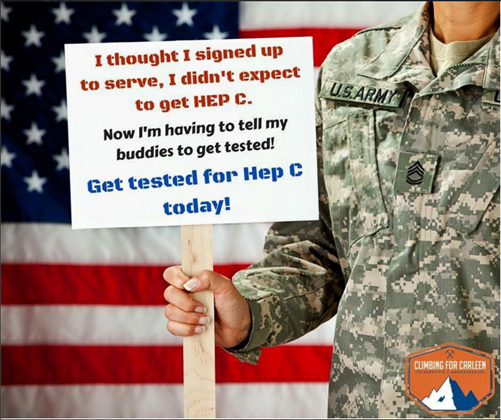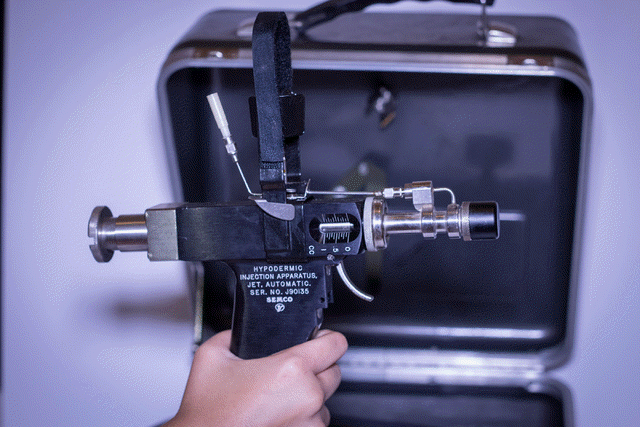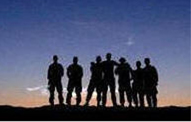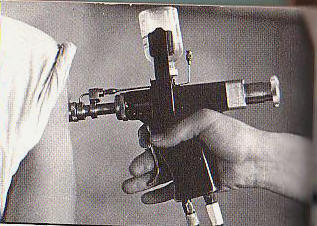|
|
|||||||||||||||||||||||||||||||||||||||||||||||||||||||||||||||||||||||||||||||||||||||||||||||||||||||||||||||||||||||||||||||||||||||||||||||||||||||||||||||||||||||||||||||||||||||||||||||||||||||||||||||||||||||||||||||||||||||||||||||||||||||||||||||||||||||||||
|
|
|||||||||||||||||||||||||||||||||||||||||||||||||||||||||||||||||||||||||||||||||||||||||||||||||||||||||||||||||||||||||||||||||||||||||||||||||||||||||||||||||||||||||||||||||||||||||||||||||||||||||||||||||||||||||||||||||||||||||||||||||||||||||||||||||||||||||||
|
On October 10,
2014, FDA
approved HARVONI
a fixed-dose
combination
tablet of
ledipasvir 90
mg, a hepatitis
C virus (HCV)
NS5A inhibitor,
and sofosbuvir
400 mg, an HCV
nucleotide
analog NS5B
polymerase
inhibitor.
Harvoni is
indicated for
the treatment of
chronic
hepatitis C (CHC)
genotype 1
infection in
adults. HARVONI
is the first
combination pill
approved to
treat chronic
HCV genotype 1
infection.
HARVONI is also
the first
approved regimen
that does not
require
administration
with interferon
or ribavirin,
two FDA-approved
drugs also used
to treat HCV
infection.
Dosage and Administration: The recommended dosage of HARVONI is one tablet taken orally once daily with or without food. Recommended Treatment Duration for HARVONI in Patients with CHC Genotype 1
* HARVONI
for 8 weeks can
be considered in
treatment-naÔve
patients without
cirrhosis who
have
pre-treatment
HCV RNA less
than 6 million
IU/mL [see
Clinical Studies
(14)]. No dosage
adjustment of
HARVONI is
required for
patients with
mild or moderate
renal
impairment. No
dose
recommendation
can be given for
patients with
severe renal
impairment
(estimated
Glomerular
Filtration Rate
[eGFR]
<30 mL/min/1.73m2)
or with end
stage renal
disease (ESRD)
due to higher
exposures (up to
20-fold) of the
predominant
sofosbuvir
metabolite. Risk
of Reduced
Therapeutic
Effect Due to
P-gp Inducers
Related Products
Not Recommended
ADVERSE
REACTIONS The Table
below lists
adverse
reactions
(adverse events
assessed as
causally related
by the
investigator,
all grades)
observed in ≥5%
of subjects
receiving 8, 12,
or 24 weeks
treatment with
HARVONI in
clinical trials.
Themajority of
adverse
reactions
presented in
Table 2 occurred
at severity of
grade 1. The
side-by-side
tabulation is to
simplify
presentation;
direct
comparison
across trials
should not be
made due to
differing trial
designs.
Laboratory Abnormalities Bilirubin Elevations: Bilirubin elevations of greater than 1.5xULN were observed in 3%, <1%, and 2% of subjects treated with HARVONI for 8, 12, and 24 weeks, respectively. Lipase Elevations: Transient, asymptomatic lipase elevations of greater than 3xULN were observed in <1%, 2%, and 3% of subjects treated with HARVONI for 8, 12, and 24 weeks, respectively. Creatine Kinase: Creatine kinase was not assessed in Phase 3 trials of HARVONI. Isolated, asymptomatic creatine kinase elevations (Grade 3 or 4) have been previously reported in subjects treated with sofosbuvir in combination with ribavirin or peginterferon/ribavirin in other clinical trials. DRUG
INTERACTIONS
a. This
table is not all
inclusive. c. These interactions have been studied in healthy adults Drugs
without
Clinically
Significant
Interactions
with HARVONI
Clinical Studies Demographics and baseline characteristics were balanced across the treatment groups. Of the 647 treated subjects, the median age was 55 years (range: 20 to 75); 58% of the subjects were male; 78% were White; 19% were Black; 6% were Hispanic or Latino; mean body mass index was 28 kg/m2 (range: 18 to 56 kg/m2); 81% had baseline HCV RNA levels greater than or equal to 800,000 IU/mL; 80% had genotype 1a HCV infection; 73% had non-C/C IL28B alleles (CT or TT). Table 6 presents the response rates for the HARVONI treatment groups in the ION-3 trial after 8 and 12 weeks of HARVONI treatment. Ribavirin was not shown to increase the response rates observed with HARVONI. Therefore, the HARVONI + ribavirin arm is not presented in Table 6. Table 6 Study ION-3: Response Rates after 8 and 12 Weeks of Treatment in Treatment-NaÔve Non-Cirrhotic Subjects with Genotype 1 CHC
a. The
denominator for
relapse is the
number of
subjects with
HCV RNA <LLOQ at
their last
on-treatment
assessment. The treatment difference between the 8-week treatment of HARVONI and 12-week treatment of HARVONI was Ė2.3% (97.5% confidence interval Ė7.2% to 2.5%). Among subjects with a baseline HCV RNA <6 million IU/mL, the SVR was 97% (119/123) with 8-week treatment of HARVONI and 96% (126/131) with 12-week treatment of HARVONI. Relapse rates by baseline viral load are presented in Table 7. Table 7 Study ION-3: Relapse Rates by Baseline Viral Load after 8 and 12 Weeks of Treatment in Treatment-NaÔve Non-Cirrhotic Subjects with Genotype 1 CHC
a. HCV RNA values were determined using the Roche TaqMan Assay; a subject's HCV RNA may vary from visit to visit.
Treatment-NaÔve
Adults with or
without
Cirrhosis -
ION-1 (Study
0102) Demographics
and baseline
characteristics
were balanced
across the
treatment
groups. Of the
865 treated
subjects, the
median age was
54 years (range:
18 to 80); 59%
of the subjects
were male; 85%
were White; 12%
were Black; 12%
were Hispanic or
Latino; mean
body mass index
was 27 kg/m2
(range: 18 to 48
kg/m2); 79% had
baseline HCV RNA
levels greater
than or equal to
800,000 IU/mL;
67% had genotype
1a HCV
infection; 70%
had non-C/C
IL28B alleles
(CT or TT); and
16% had
cirrhosis. Table 8 Study ION-1: Response Rates after 12 Weeks of Treatment in Treatment-NaÔve Subjects with Genotype 1 CHC with and without Cirrhosis
a.
Excluding one
subject with
genotype 4
infection. Response rates for selected subgroups are presented in Table 9. Table 9 Study ION-1: SVR Rates for Selected Subgroups after 12 Weeks of Treatment in Treatment-NaÔve Subjects with Genotype 1 CHC with and without Cirrhosis
a. One
subject without
a confirmed
subtype for
genotype 1
infection and
one subject with
genotype 4
infection were
excluded from
this subgroup
analysis. 14.3
Clinical Trials
in Subjects Who
Failed Prior
Therapy Demographics and baseline characteristics were balanced across the treatment groups. Of the 440 treated subjects, the median age was 57 years (range: 24 to 75); 65% of the subjects were male; 81% were White; 18% were Black; 9% were Hispanic or Latino; mean body mass index was 28 kg/m2 (range: 19 to 50 kg/m2); 89% had baseline HCV RNA levels greater than or equal to 800,000 IU/mL; 79% had genotype 1a HCV infection; 88% had non-C/C IL28B alleles (CT or TT); and 20% had cirrhosis. Forty‑seven percent (47%) of the subjects failed a prior therapy of pegylated interferon and ribavirin. Among these subjects, 49% were relapse/breakthrough and 51% were non-responder. Fifty-three percent (53%) of the subjects failed a prior therapy of pegylated interferon and ribavirin with an HCV protease inhibitor. Among these subjects, 62% were relapse/breakthrough and 38% were non-responder. Table 10 presents the response rates for the HARVONI treatment groups in the ION-2 trial. Ribavirin was not shown to increase response rates observed with HARVONI. Therefore, the HARVONI + ribavirin arms are not presented in Table 10. Table 10 Study ION-2: Response Rates after 12 and 24 Weeks of Treatment in Subjects with Genotype 1 CHC with or without Cirrhosis who Failed Prior Therapy
a. The
denominator for
relapse is the
number of
subjects with
HCV RNA <LLOQ at
their last
on-treatment
assessment. Among the subjects with available SVR12 and SVR24 data (206/218), all subjects who achieved SVR12 in the ION-2 study also achieved SVR24. Response rates and relapse rates for selected subgroups are presented in Tables 11 and 12. Table 11 Study ION-2: SVR Rates for Selected Subgroups after 12 and 24 Weeks of Treatment in Subjects with Genotype 1 CHC who Failed Prior Therapy
a. Subjects with missing cirrhosis status were excluded from this subgroup analysis. Table 12 Study ION-2: Relapse Rates for Selected Subgroups after 12 and 24 Weeks of Treatment in Subjects with Genotype 1 CHC who Failed Prior Therapy
a. Subjects
with missing
cirrhosis status
were excluded
from this
subgroup
analysis. HARVONI is a product of Gilead Sciences, Inc.. The complete product label will be available soon at DailyMed or at Drugs@FDA. Also see: FDA Press Release Richard Klein Kimberly
Struble Steve Morin |
|||||||||||||||||||||||||||||||||||||||||||||||||||||||||||||||||||||||||||||||||||||||||||||||||||||||||||||||||||||||||||||||||||||||||||||||||||||||||||||||||||||||||||||||||||||||||||||||||||||||||||||||||||||||||||||||||||||||||||
|
|
|





